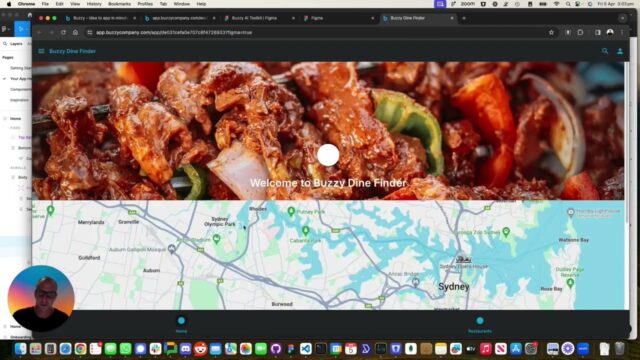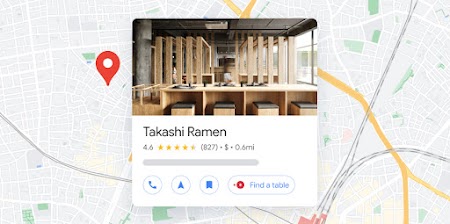Having an interactive map on your restaurant website is an excellent way to guide customers to your location, showcase nearby attractions, or even highlight multiple branches. A well-designed map not only improves the user experience but also helps customers quickly find key information, such as parking availability, delivery zones, or special seating areas.
In this blog, we’ll explore the best tools to help you create an interactive map for your restaurant website, ensuring a seamless experience for your visitors.

Why You Need an Interactive Map for Your Restaurant Website
Adding an interactive map to your restaurant’s website brings several benefits:
- Enhanced navigation: Makes it easy for customers to find your location and plan their visit.
- Increased engagement: Interactive features can highlight multiple locations or unique aspects of your venue, such as outdoor seating or private dining rooms.
- Improved SEO: Embedding maps with location information helps search engines associate your restaurant with geographic searches, improving local SEO.
- Mobile-friendly experience: Interactive maps work well on mobile devices, making it convenient for customers on the go.
Now that you know the benefits, let’s dive into the best tools for creating an interactive map.
1. Google Maps Platform
One of the most widely used and reliable mapping tools, Google Maps is perfect for adding an interactive map to your website. With Google Maps, you can embed a basic map for free or opt for the more customizable features available through the Google Maps Platform.
Features:
- Custom markers: Add your restaurant’s logo or custom icons to highlight your location.
- Street view: Allow customers to see the surrounding area or even a 360-degree view of your restaurant.
- Driving directions: Provide customers with real-time directions to your location from anywhere.
- Multiple locations: Easily mark multiple restaurant locations on one map.
How to use it:
- Go to Google Maps, search for your restaurant, click on “Share” and copy the embed code to paste into your website.
- For more advanced customization, use the Google Maps API through the Google Cloud Platform.
Best for:
Restaurants looking for a free, reliable, and recognizable map tool with powerful features, especially for customers relying on Google Maps for navigation.
2. Mapbox
Mapbox is a flexible, developer-friendly mapping platform that allows you to build highly customized and interactive maps for your website. It’s ideal if you want more control over the design of your map.
Features:
- Custom styles: Choose from a variety of pre-made styles or create your own to match your restaurant’s branding.
- Dynamic markers: Highlight multiple locations or areas of interest such as parking spots, delivery zones, or special seating areas.
- Geocoding: Convert addresses into geographical coordinates to show multiple locations.
- Zoom and pan controls: Give users the ability to explore nearby attractions or restaurants.
How to use it:
- Sign up for a Mapbox account, generate an API key, and use the map builder to create your custom map. Mapbox also offers plugins for platforms like WordPress.
Best for:
Restaurants that need a highly customizable map with unique styling options to fit their brand, especially for websites with multiple branches.
3. Leaflet
Leaflet is an open-source JavaScript library for creating mobile-friendly interactive maps. It’s lightweight, easy to use, and allows for various customizations without needing extensive coding knowledge.
Features:
- Simple integration: Quickly add a basic map using straightforward HTML code.
- Customizable icons and layers: Add custom icons, layers, and pop-up descriptions to highlight special areas or seating.
- Responsive design: Maps created with Leaflet are mobile-friendly and adapt to different screen sizes.
- Integration with other data sources: Connect with external sources like OpenStreetMap for location data.
How to use it:
- Download the Leaflet library and include it in your website’s code. Use their documentation to set up a basic map or add advanced features like custom markers and pop-ups.
Best for:
Restaurants with tech-savvy web developers who want a lightweight, highly customizable map tool without relying on third-party services.
4. Snazzy Maps
Snazzy Maps is a great tool for customizing the appearance of Google Maps on your restaurant’s website. It offers a range of styles and color schemes that help make your map stand out and fit your restaurant’s design.
Features:
- Pre-designed themes: Choose from hundreds of map styles designed by users or create your own.
- Custom markers: Personalize markers to highlight key points like the main entrance, parking, or delivery zones.
- Easy integration: Simply generate a code for the style you like and apply it to a Google Map embed.
How to use it:
- Visit the Snazzy Maps website, pick a style, and follow the steps to implement it with your Google Maps embed code.
Best for:
Restaurants that already use Google Maps but want to elevate its appearance with more stylish or on-brand map designs.
5. Maptive
Maptive is a user-friendly tool that allows you to create fully customizable maps using Google Maps as a foundation. It offers more advanced options for restaurants looking to display complex data like delivery zones or multiple locations.
Features:
- Territory mapping: Display delivery zones, parking areas, or regions where your restaurant offers special services.
- Data visualization: Add customer or sales data to your map for internal use or marketing campaigns.
- Real-time traffic data: Integrate live traffic information to help customers navigate to your restaurant easily.
- Custom labels and icons: Highlight important areas with unique icons and text labels.
How to use it:
- Sign up for Maptive, upload your data (e.g., restaurant addresses, delivery zones), and use the drag-and-drop editor to customize your map.
Best for:
Restaurants with more complex mapping needs, such as displaying delivery territories or highlighting several locations, while still using a Google Maps interface.
6. ZeeMaps
ZeeMaps is a powerful mapping tool that allows you to create and share interactive maps quickly. It’s especially useful for restaurants with multiple locations or chains looking for an easy way to display them on their website.
Features:
- Multiple locations: Add numerous restaurant locations, including store hours and contact information.
- Custom map markers: Design custom markers to reflect different types of services such as dine-in, delivery, or takeaway.
- Collaborative features: Allow team members or customers to contribute to the map with reviews or suggestions.
- Embed or share: Easily embed the map on your website or share it via social media.
How to use it:
- Visit ZeeMaps, create a new map, add your restaurant locations, and customize markers and settings. Generate an embed code to place the map on your website.
Best for:
Restaurants or chains with multiple branches that want a fast, easy-to-use solution for showcasing locations with minimal coding required.
7. uMap
uMap allows you to create custom maps by importing data from OpenStreetMap and is a great open-source tool for adding interactive maps to your restaurant website.
Features:
- Custom layers: Add different map layers for dining areas, delivery zones, or special offers.
- User-friendly interface: No coding experience is required to create and embed maps.
- Open-source: Free and community-driven, allowing for extensive customization.
How to use it:
- Go to the uMap website, create a new map, add locations or zones, and customize the look of the map. Once done, embed it on your website.
Best for:
Restaurants looking for an open-source, budget-friendly mapping solution with basic features.
Conclusion
Adding an interactive map to your restaurant website can greatly enhance the user experience, helping customers find your location with ease and interact with your venue in a more engaging way. Whether you need a simple map highlighting your location or a more detailed display of multiple branches, delivery zones, and seating areas, these tools provide a variety of options to suit your needs.


No responses yet